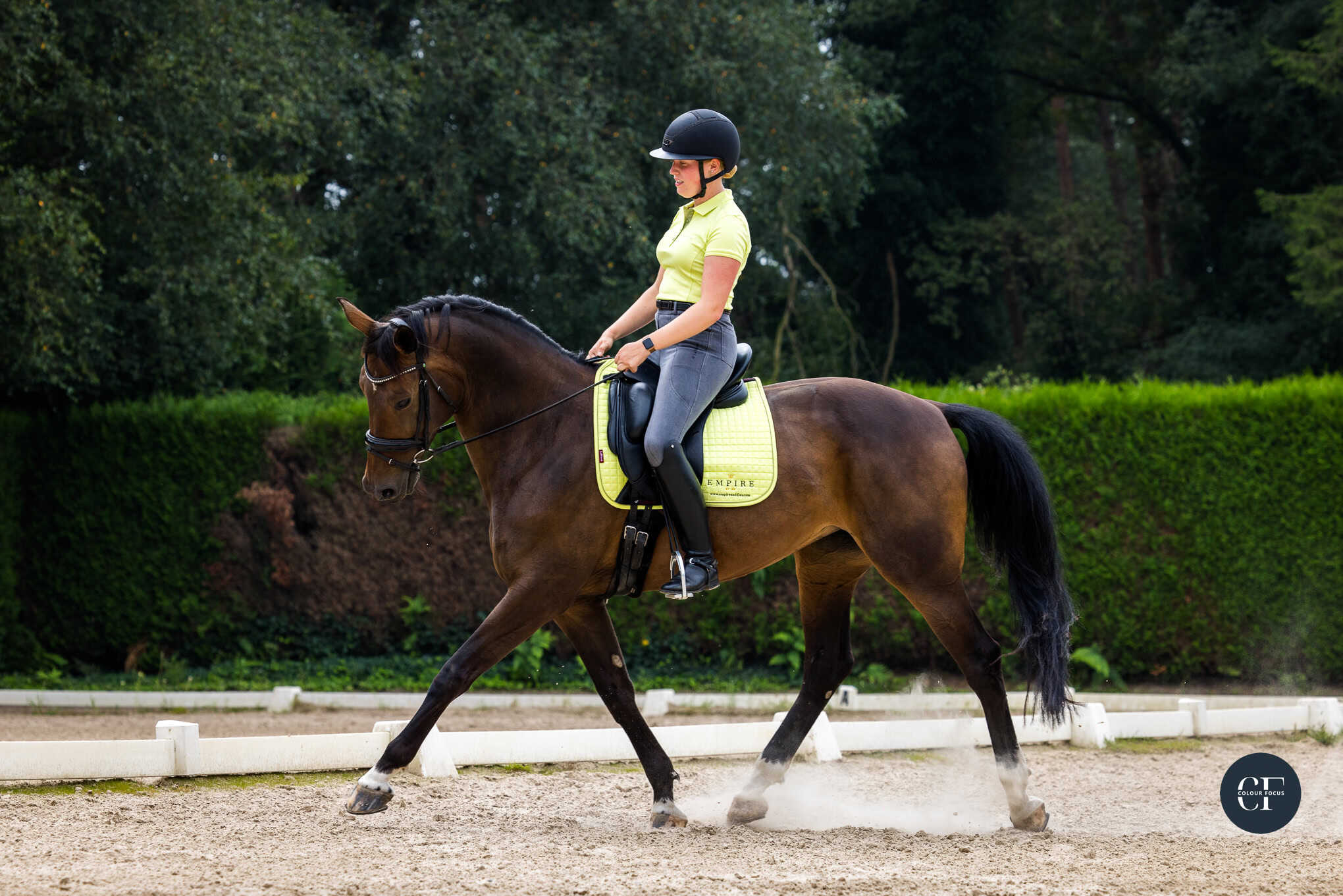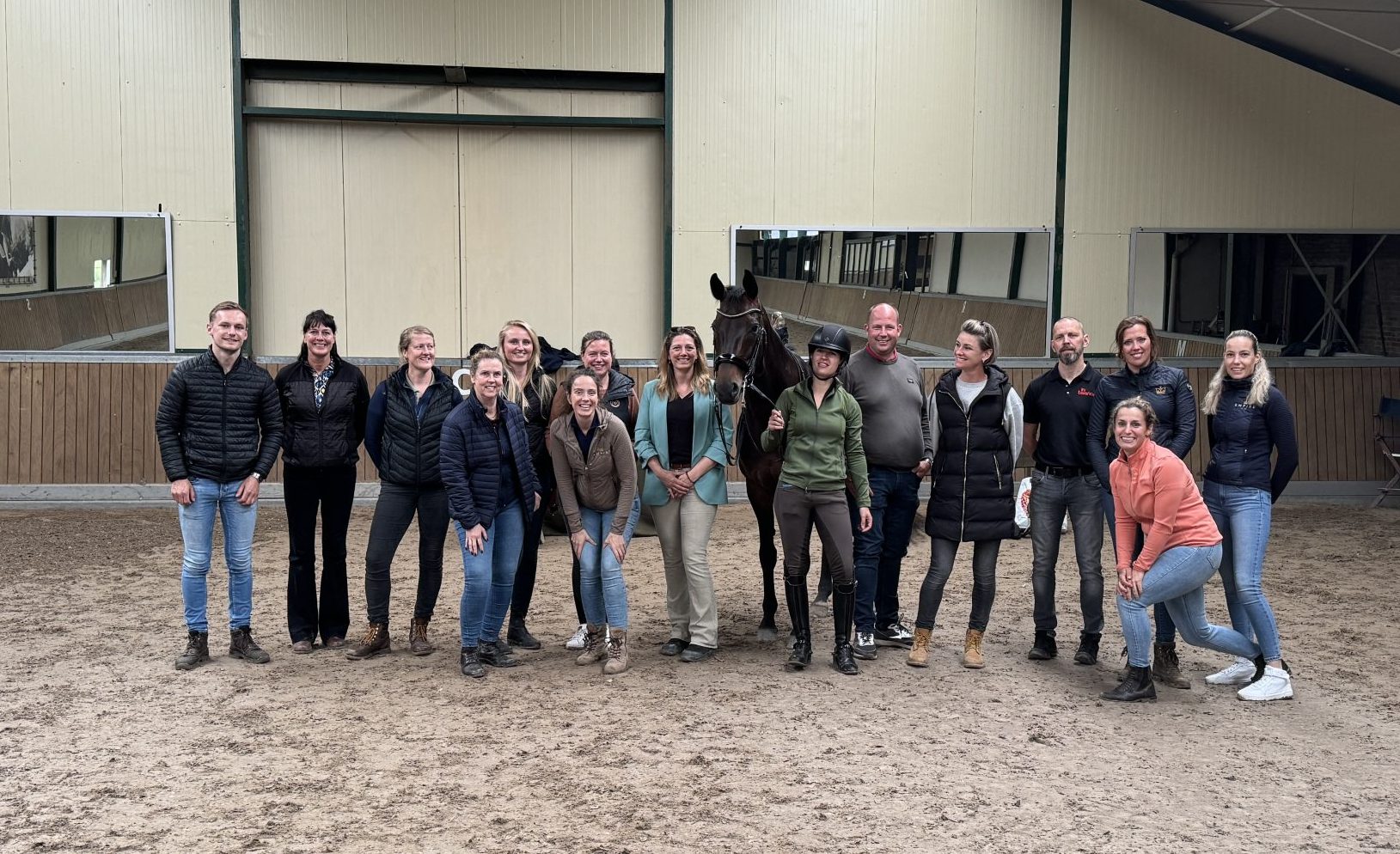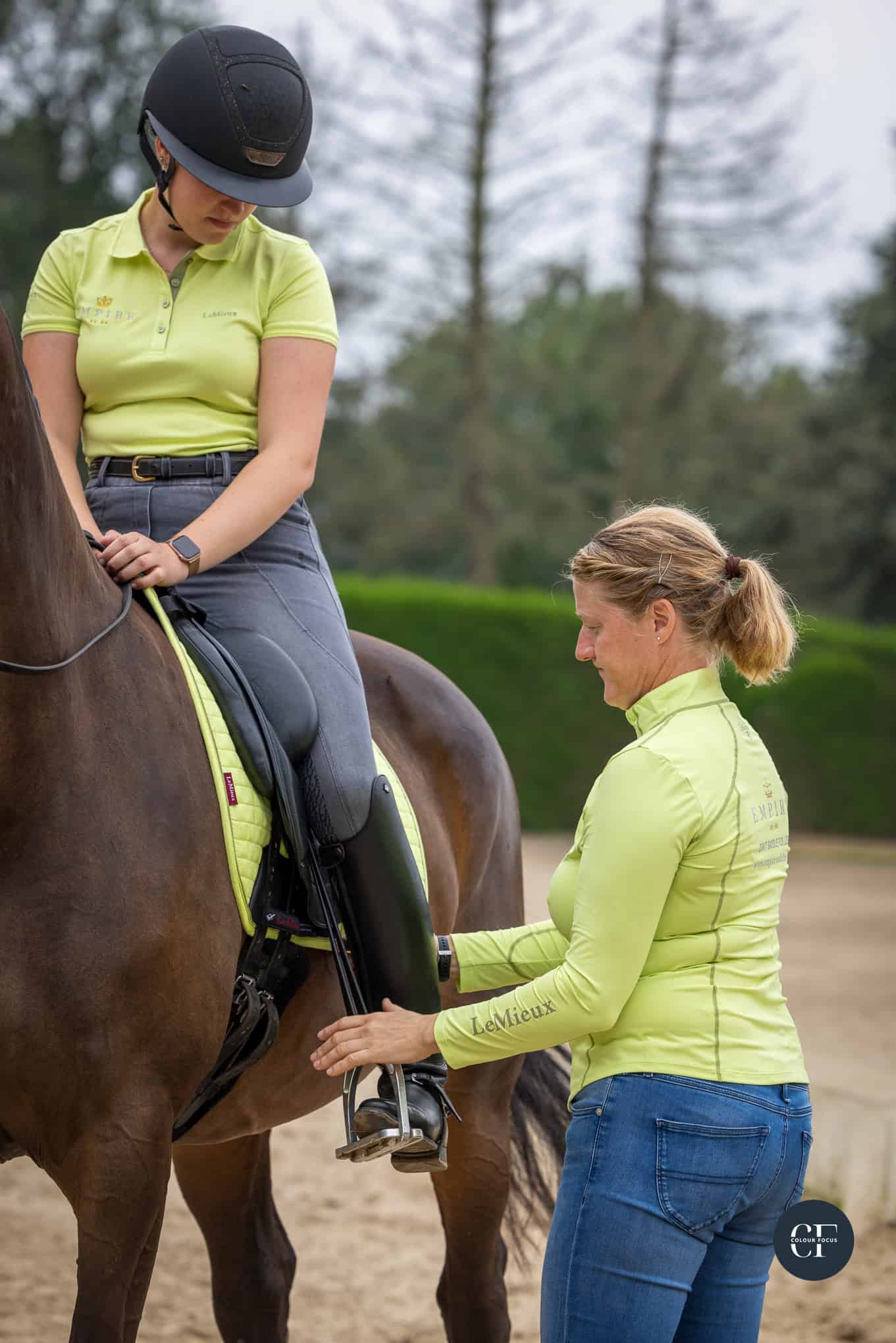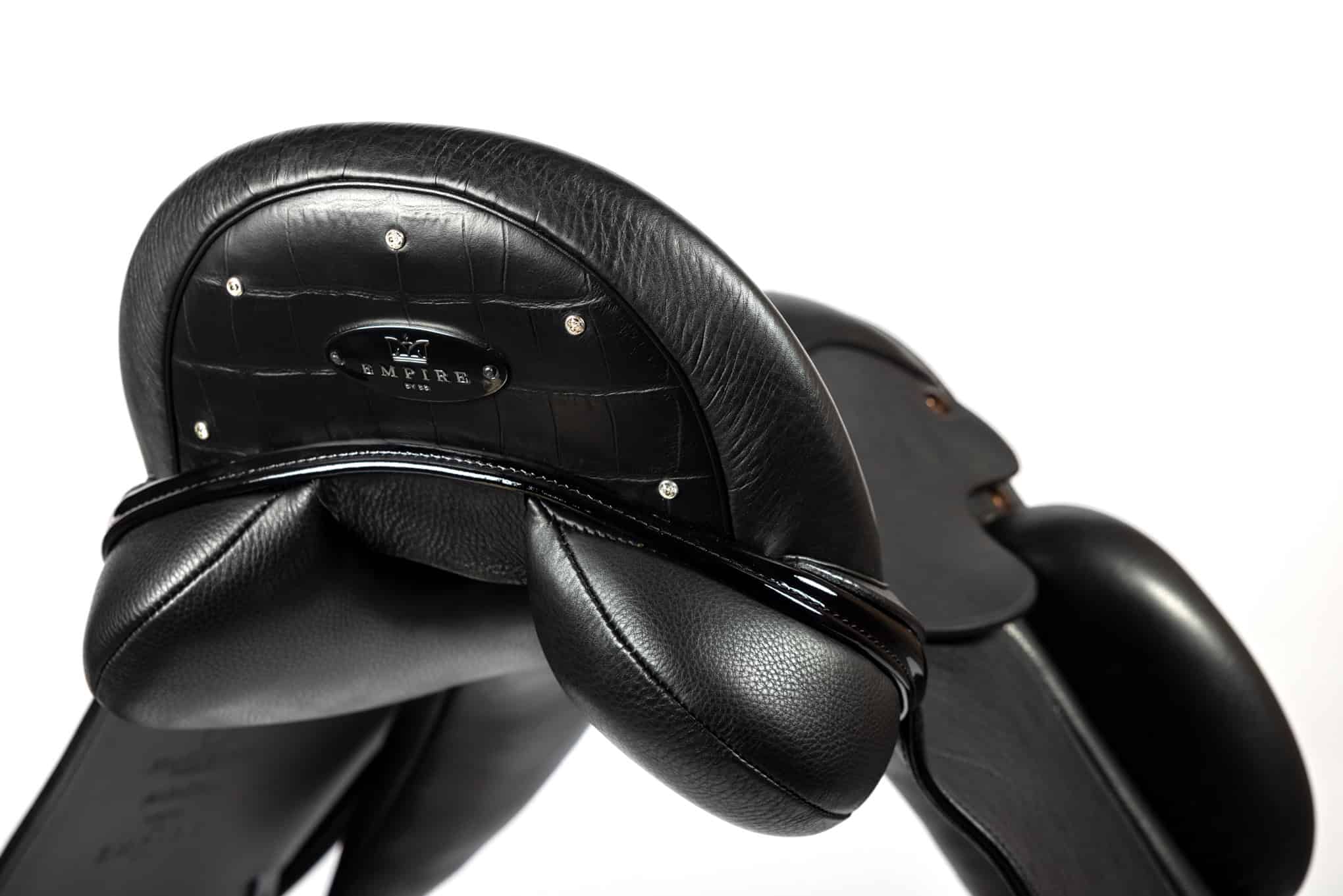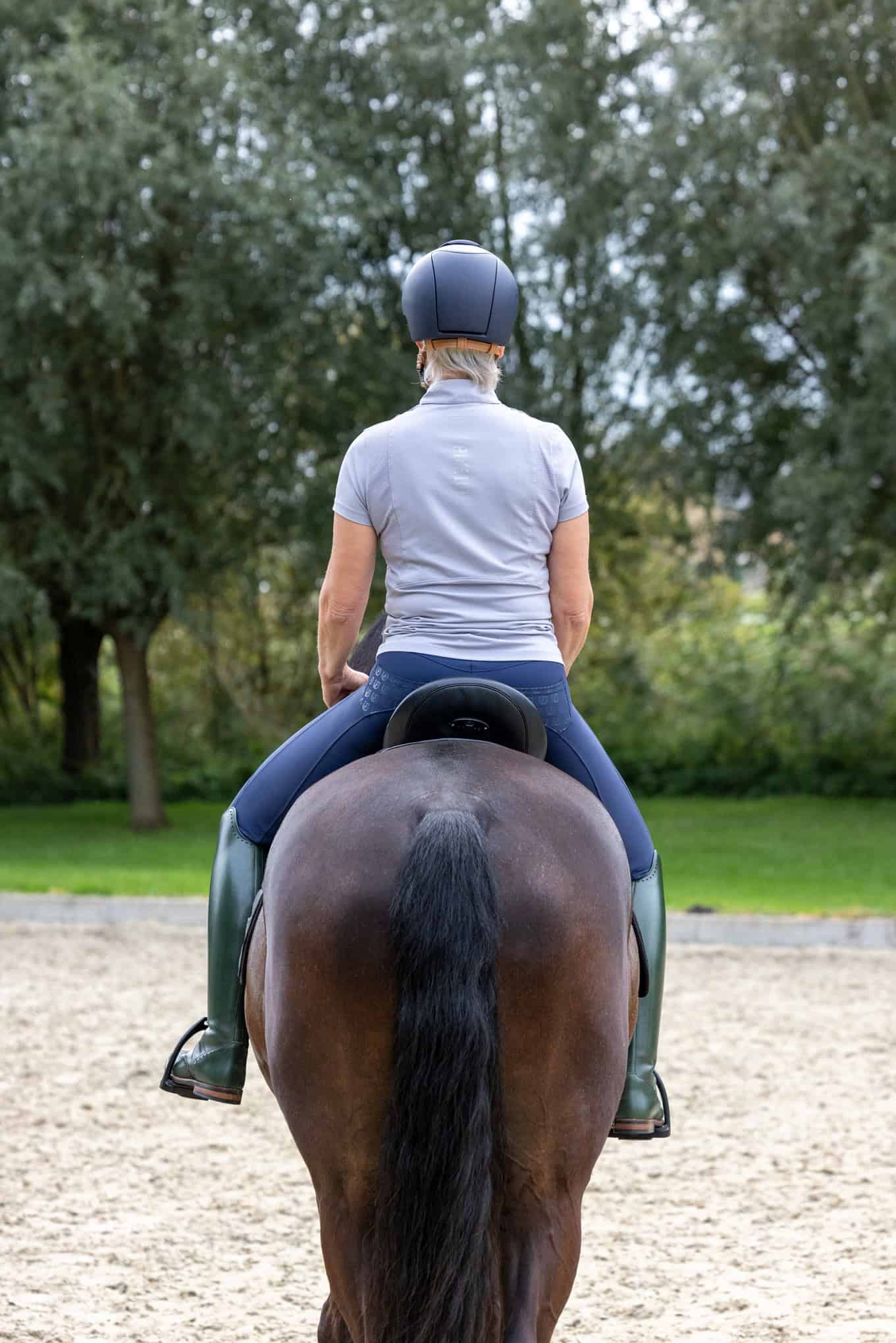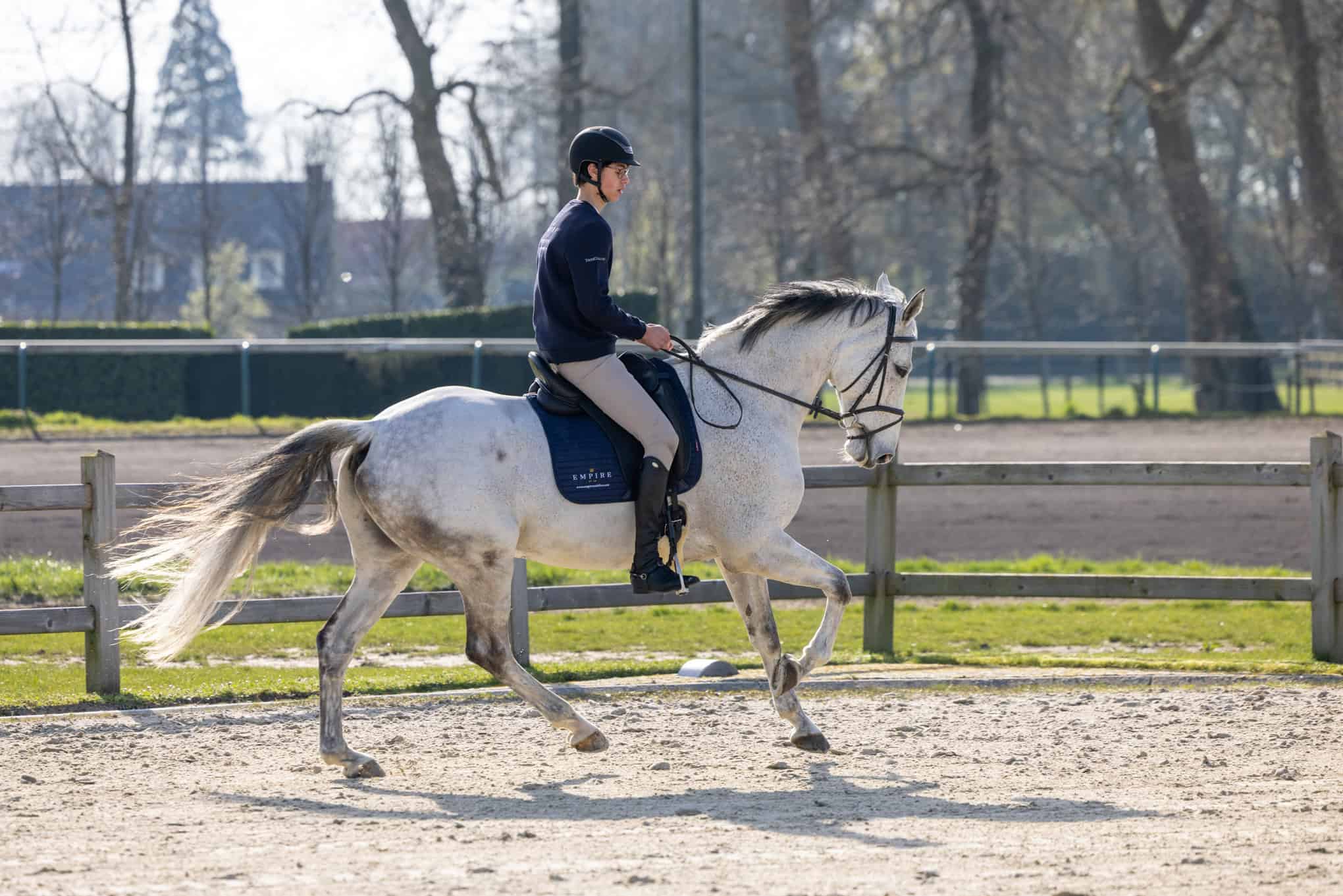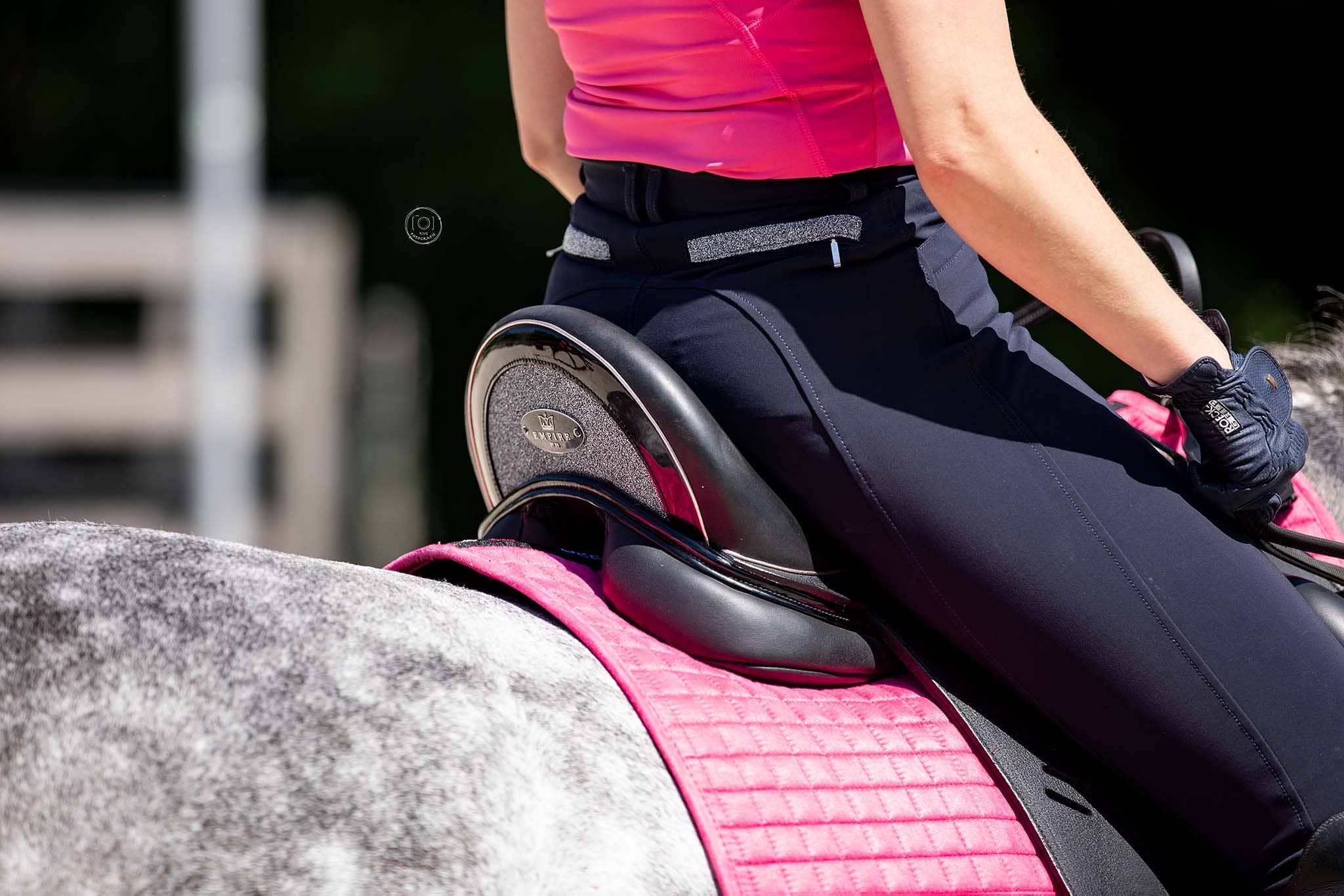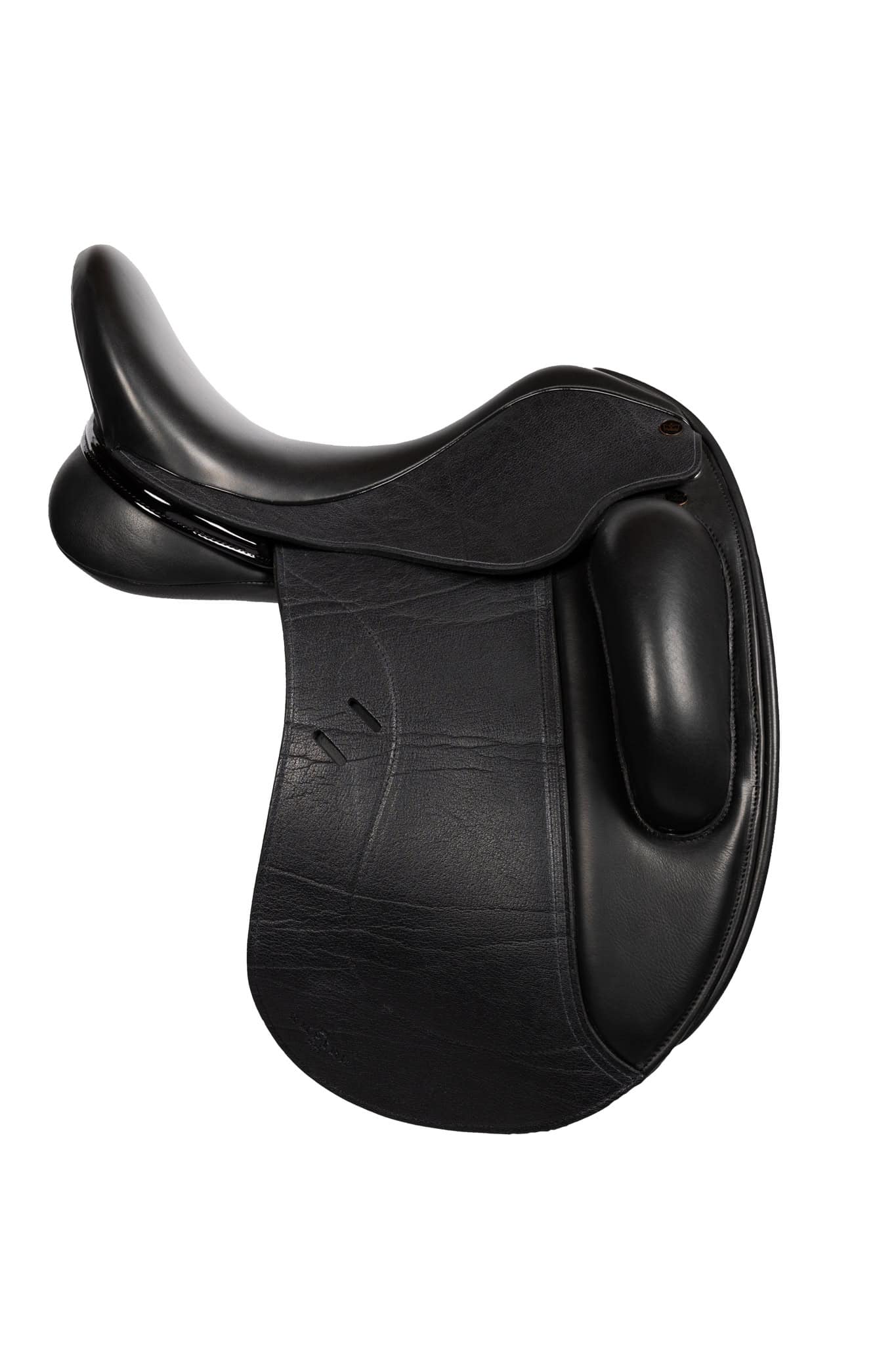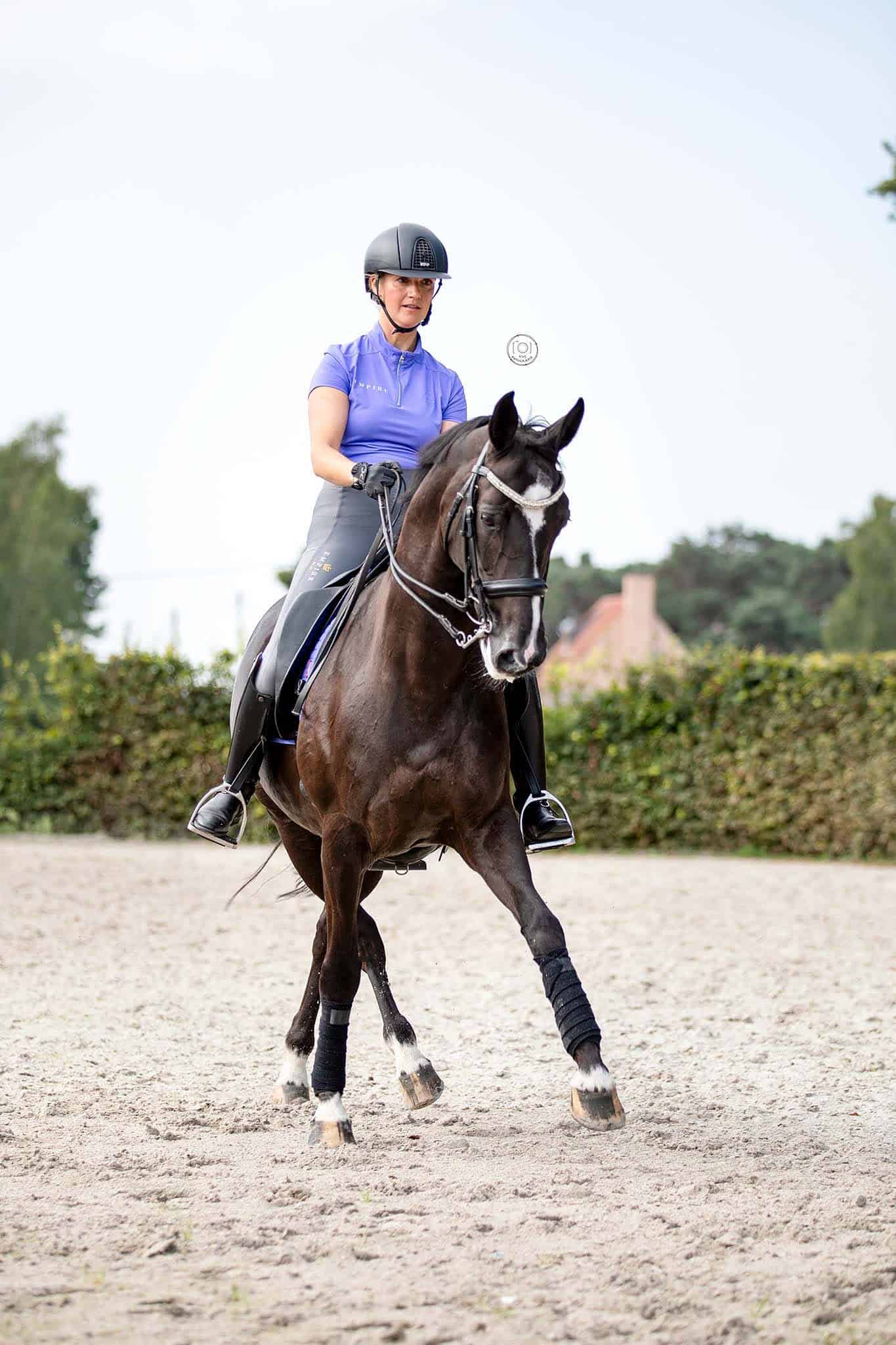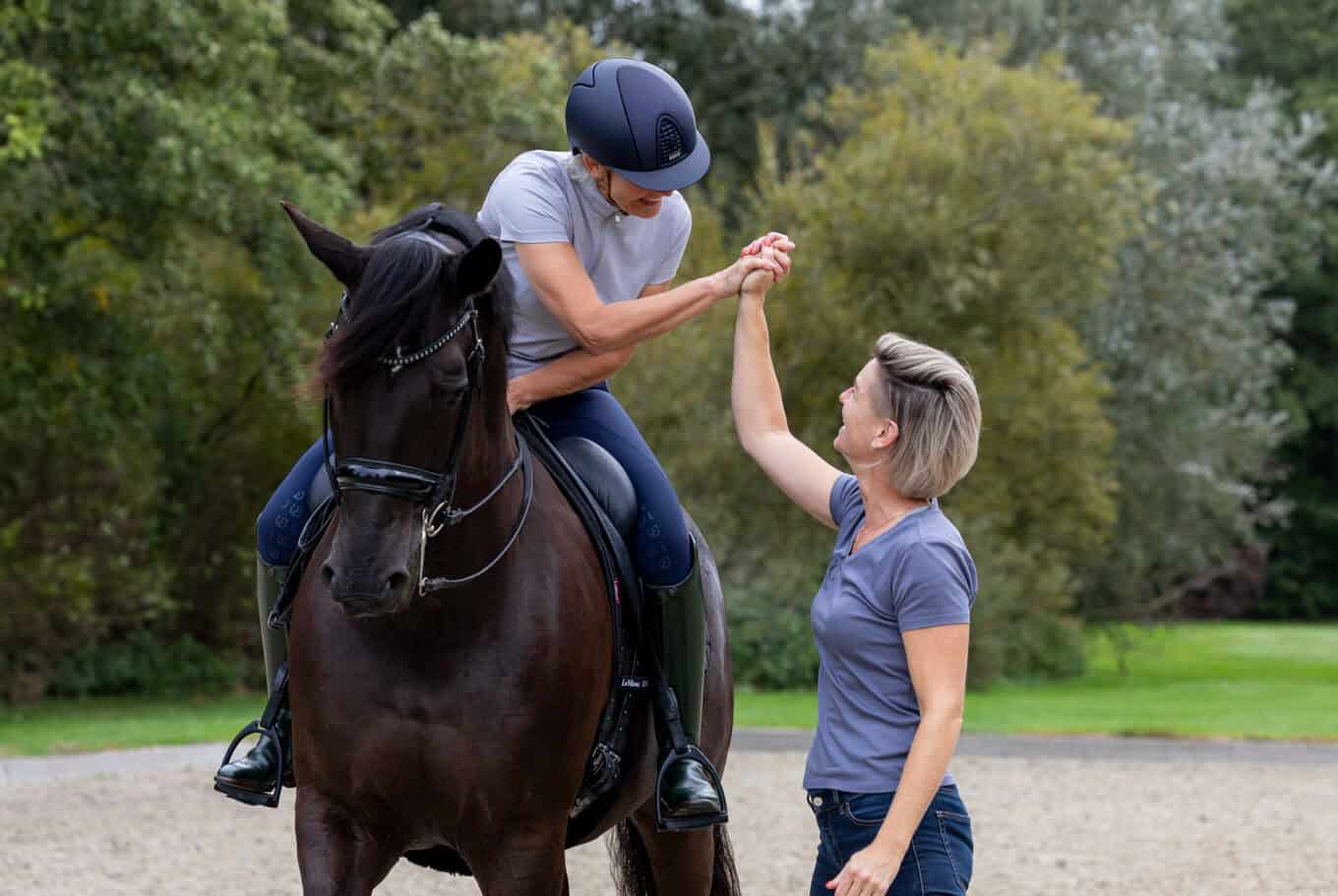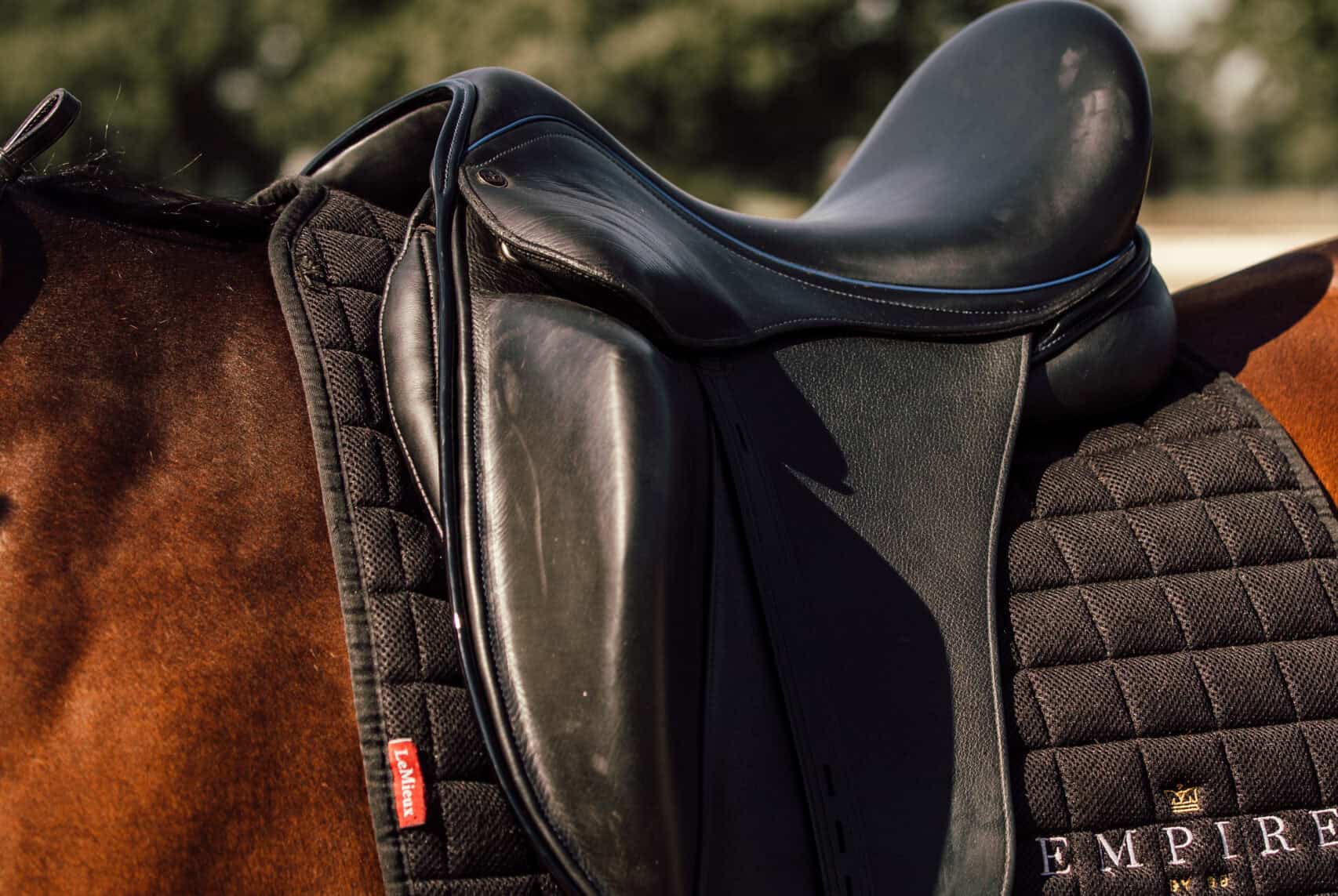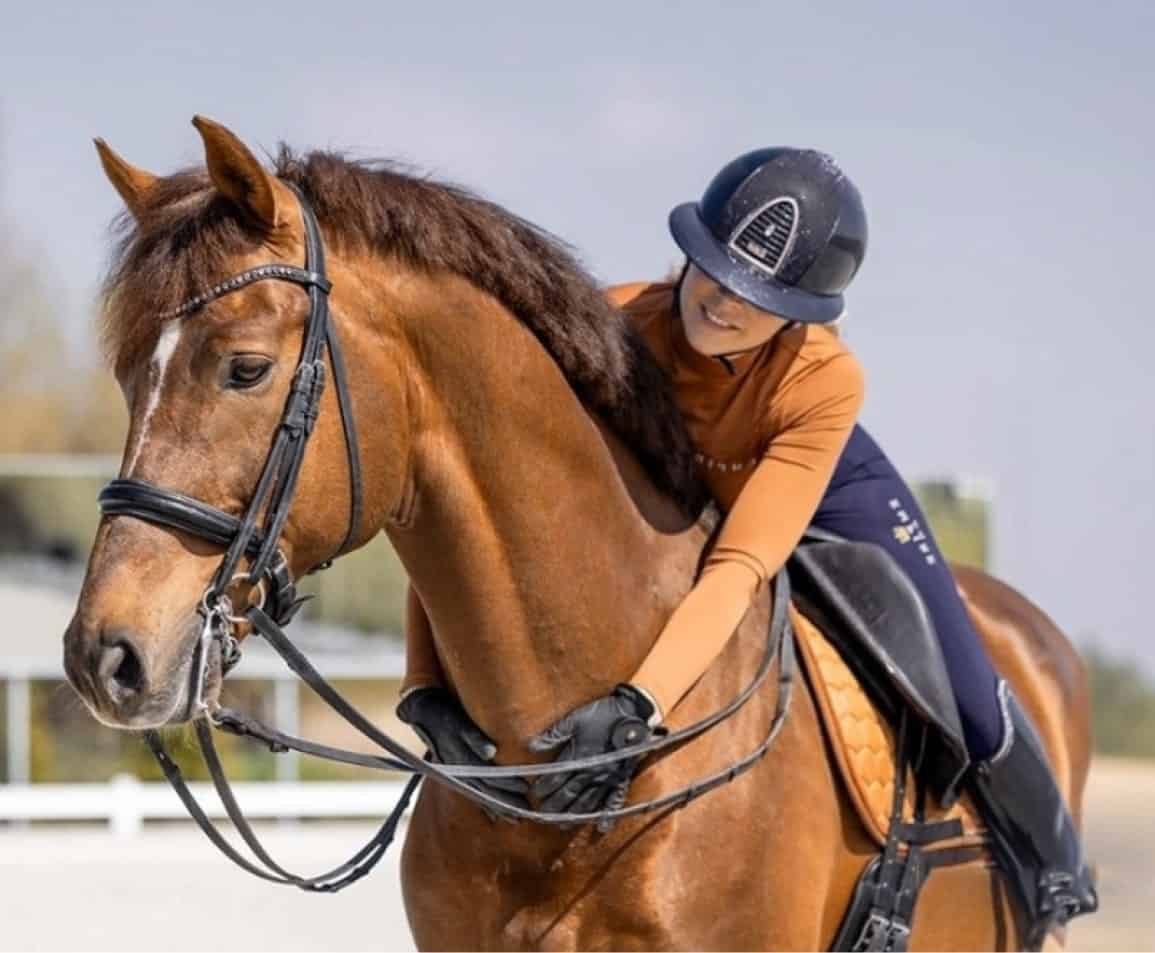Getting up without a stool: used to be quite normal, but now we know better, right? Unfortunately, we still see it come by often, even as funny videos on social media in which riders show how fit and tough they are by getting on without a crutch (while the horse is running away).
But getting on without a stool is not tough; it is simply old-fashioned and harmful to your horse and saddle.
Why it’s bad for your horse AND your saddle
Research shows time and again that getting on without a crutch disturbs the horse’s natural balance and can cause problems. Maybe you recognize it: your horse starts stepping away while you don’t even have your foot in the stirrup yet. Often this is not a matter of “feeling like work” or “not having patience,” but a clear signal of discomfort.
Research by Centaur Biomechanics shows that when stepping up from the ground, a large amount of pressure occurs just behind the withers, on one side of the horse. The force created by pulling yourself up on one stirrup and on one side of the saddle. For your horse, that feels anything but comfortable. The horses in the study also clearly demonstrated this, by shifting their weight and resisting while mounting. The horse knows what is coming and tries to “avoid” the pressure, so to speak.
The uneven loading of the saddle can also cause the saddle’s tree to deform. That means the fit is no longer optimal, which again leads to discomfort for your horse. Of course, no one is waiting for that and it is simply not necessary.
Want to be really tough? If so, use a step stool.
The higher the stool, the better. Using a step stool where you still have to place your foot in the bracket to ascend still creates pressure. However, it is considerably less and of shorter duration than when you step up without a crutch. But, it is best to use a step block where you can swing your leg directly over the saddle, without using the stirrup. That’s how you avoid those huge peak pressures.
In addition, the correct hand position is important: one hand should rest on the mane crest, while the other hand holds the sweat sheet on the opposite side (on the front of the saddle). This helps keep the saddle securely in place and reduces stress on the horse.
Being fit for emergencies
Of course, in an emergency situation, you should be fit enough to get up without a crutch. That’s a good skill to have. Fortunately, you can also train that just fine without stressing your horse. Consider exercises on a sturdy gym ball or simply jumping up from a standstill. This way you work on your fitness and save your horse. Win-win, right?
Respect for your horse and your saddle
Being truly tough anno 2025 means having respect for your horse and your equipment. You make conscious choices that contribute to the well-being of your horse and the longevity of your saddle. Getting on with a stool is an obvious example.
